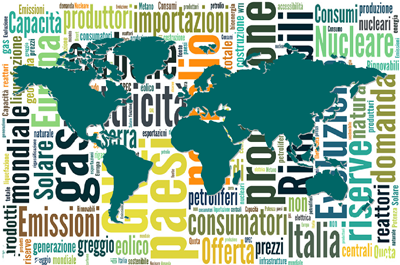The World Energy Outlook by IEA was one of the most expected documents to be issue by stakeholders in the energy sector, policymakers and private decision makers and analysts. Other than describing forecasted energy developments, it provides a critical analysis of the main events that characterise the current global energy scenario. Considered by many as the reference point among the global energy scenarios in the medium-long term, the report has, over the years, been transformed and updated to changes affecting the energy realm: scenario typologies have been mutating, as much as the relevance given to singular energy sources and geographical areas. We have talked with Laura Cozzi from IEA about these evolutions and how the Agency ended up discussing these current energy issues.
Geopolitics is one of the main, if not the primary variable affecting energy markets today. How is the IEA approaching the way international politics influences energy markets? How energy stakeholders should update approaches to this growing complexity and interlinkages between geopolitics and markets?
As you say, geopolitics are a key factor shaping energy markets, and as energy security remains a core mission for us at the IEA, these are issues we watch closely. Recent events have again highlighted the vulnerability of today’s energy system to global events – and also underscored the impact energy price rises can have on consumers. The immediate price shocks from the energy crisis following Russia’s invasion of Ukraine have now eased, but the ongoing situation in the Middle East serves to remind of ever-present risks.
Our latest World Energy Outlook (WEO) analysis, however, finds a shift in energy market dynamics expected this decade. On the supply side, global spare oil production capacity stands today at 6 million barrels per day (mb/d), twice the level in 2019. By 2030, it could rise to 8 mb/d. For gas, we expect to see a surplus in LNG this decade, as wave of new capacity comes online.
These dynamics should help buffer against potential outages and signal downward pressure on prices, barring geopolitical uncertainties. However, there is no room for complacency, as we see a general trend of increased supply concentration and rising import dependence.
New geopolitical hazards are also emerging, as the world shifts to a cleaner, more electrified energy system. Our analysis does highlight that for key technologies like solar PV and batteries, production capacity is ample to meet supply now and in 2030. But very high supply chain concentration, especially for raw materials processing and manufacturing capacity in China, creates disruption risks.
In response, we see governments taking steps to bolster domestic clean energy manufacturing and diversify supply chains. The growing trade in clean energy technologies is the focus of our upcoming 2024 Energy Technology Perspectives report. And as the geopolitical challenges facing the energy sector will continue to evolve, the IEA is holding a major energy security summit with the UK government, in April 2025 in London.
WEO 2024 asserts that AI is considered both a threat and an opportunity for the stability of global energy systems. What should OECD countries do in order to transform perils into possibilities and intervene before data centres energy demand will apply too much pressure on the stability of national and global energy systems?
Artificial intelligence (AI) has quickly emerged as one of today’s hottest global topics – and its impact on the energy sector could be transformative.
The expansion of AI – and the data centres it relies on – relies on electricity consumption. In early 2024 over 11,000 data centres were registered worldwide, and the number installed grew by 4% annually over from 2010 to 2020. Data centre consumption in 2022 was estimated to be in the range of 240 to 340 TWh. That equates to a little over 1% of global electricity consumption. But while that remains a small share of the global total, the potential for growth is significant, amid a boom in new investment in data centres and AI. Moreover, data centres are often located in dense clusters – adding to the strains on generation and grid capacity at the local level, and prompting some jurisdictions to pause or restrict further data centre development.
Alongside these challenges, the rise of AI can also present opportunities for the energy sector. Applications can include shorter innovation cycles, accelerating the development of clean energy technologies. AI may also help improve systems coordination and grid management in an increasingly renewables-rich power sector. And technology advances could be used to optimise operations and maintenance in the buildings sector, industrial processes and transport fleets, bringing energy efficiency gains and emissions reductions.
In a fast-developing sector there is much more to learn, and with availability of data still sparse, projections for future electricity demand are still uncertain. To help advance understanding on these issues we will be hosting a global conference on Energy and AI in Paris in December 2024.
The World Energy Outlook, which has been published as an annual report since 1998, is widely viewed as the most authoritative source of analysis and projections, providing critical insights into global energy supply and demand under different scenarios. What is behind such an important report? How difficult was it to reconstruct historical series, forecasting models and so on?
The latest WEO report is – as every year – a huge team effort. At its heart is the detailed and diligent modeling and analysis work carried out by teams in our Directorate of Sustainability, Technology and Outlooks. But beyond our own expertise at the IEA, we also benefit from an extensive peer review process, with many international experts from around the world providing input.
The analysis of future trends in the WEO report is built around a scenario approach relying on our integrated modelling framework, the Global Energy and Climate (GEC) Model. The model is constructed on the robust foundation of the IEA’s own extensive databases of energy, economic and emissions statistics, which is supplemented by further data drawn from a wide range of external sources. We use the GEC model to explore multiple scenarios, each built on a different set of key assumptions about how the energy system might evolve out to 2050. By comparing them, readers can assess what drives the various outcomes, and the opportunities and pitfalls that lie along the way. Our scenario analysis is designed to inform decision makers as they consider options, not to predict how they will act, and none of the scenarios should be viewed as a forecast.
Although we are aware of the difficulty of answering in a few lines, in almost 30 years how has the world of energy changed? What can be considered the main stages of change?
In over a quarter century since the first WEO report was published, much has changed. The map of how energy is consumed globally has evolved fast. In 1998, advanced economies accounted for 55% of global demand. But energy demand from these economies peaked before 2010 and by 2023 fell back to 1998 levels. By contrast, demand from emerging market and developing economies has grown rapidly, increasing 140% over the same period, as populations and incomes have risen.
Driven by fast-growing economies, one trend that changed less has been the continued rise in demand for fossil fuels, with oil use rising 30%, gas by 80% and coal by 90% from 1998 to 2023. As a result, energy-related CO2 emissions have continued rising too.But our analysis of energy sector policy and technology trends indicates we are entering a new global energy era. Clean energy sources are now joining the power sector at an unprecedented rate, with more than 560 gigawatts (GW) of new renewables capacity added in 2023. We expect renewable power capacity to rise from 4 250 GW today to nearly 10 000 GW in 2030 in the Stated Energy Policies Scenario (STEPS). Global electricity demand continues to grow, propelled in part by the expansion of electrification into new end-use sectors. In road transport, the EV share of new car sales has risen to around 20% worldwide, and this increases towards 50% by 2030 in the STEPS.
These trends are starting to impact the outlook for other fuels. By 2030 EVs displace around 6 mb/d of oil demand in the STEPS. Rising renewable power deployment, while not fast enough to meet the 2030 tripling renewables goal set at COP28, is enough to both meet rising electricity demand and push coal-fired power generation into decline. We expect demand for all fossil fuels to peak before 2030 in all scenarios, matched by an imminent peak in energy-related CO2 emissions.
More than anywhere else, it is in China that these trends have played out since 1998. China alone accounted for over 50% of all energy demand growth from 1998 to 2023. And China today is at the forefront of both manufacturing and deploying clean energy technologies. China alone accounts for more than 40% of global installed capacity for wind and solar PV, and more than half of the electric cars in the world today.




















